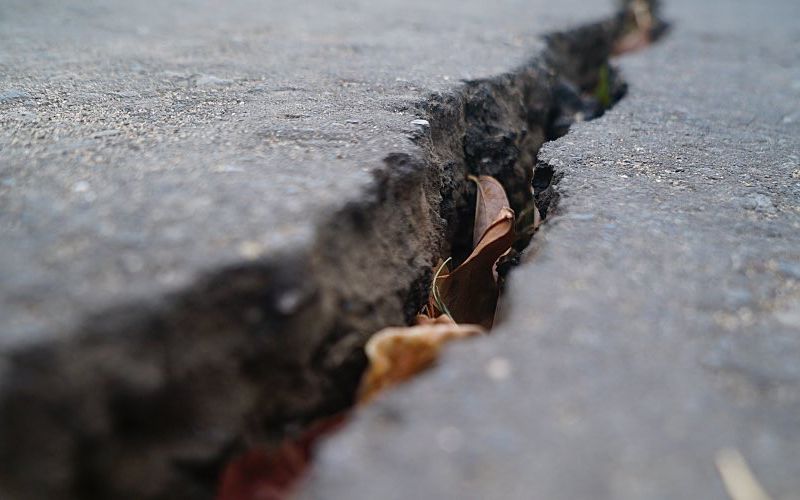Preparing for Earthquakes: Utilities and Water Labs


More than 143 million Americans—almost half the population—live in areas vulnerable to earthquakes, according to the U.S. Geologic Survey (USGS). The quakes occur frequently along the West Coast's faults and fractures, but even the center of the country and portions of the East Coast have active earthquake zones.
To make more informed decisions on mitigation measures, it's critical to understand earthquakes and their potential impacts on your utility or lab and the community you serve. Mitigation measures may require a financial investment, but they can significantly reduce or prevent costlier damages and economic losses. And the faster you recover from an earthquake, the faster you and your community can get back to business.
Earthquake Resilience
The EPA created the Earthquake Resilience Guide to help water and wastewater utilities get back online sooner after experiencing a damaging quake. The following measures also apply to water labs.
Understand Earthquake Threat
When you think of earthquakes, envision two blocks of the earth's crust sliding past each other but getting stuck while the blocks continue to move. According to the USGS, once the edges break free and the stored frictional energy releases, the seismic waves ripple outward and shake the earth.
Human activity can also induce slippage. Ground movement includes the characteristic shaking and displacement, along with sinking in loose, sandy soil, lateral spreading, and settling. In addition, earthquakes don't necessarily occur on their own—they're frequently accompanied by tsunamis, landslides and rockfalls, fires, and flooding.
For more information about flooding, see Preparation for Floods for Drinking Water and Wastewater Utilities. To build resilience and coordinate and communicate with electric and gas utilities, also see Power Resilience: Guide for Water and Wastewater Utilities from the EPA.
Identify Vulnerable Assets and Determine Consequences
Once you determine that earthquakes could threaten your facility, it's important to evaluate which systems are vulnerable. Extreme seismic activity can cause hundreds of breaks in water pipelines, along with ruptures in tanks and collapse of buildings. This infrastructure damage can disrupt service for thousands in your community.
To prepare, inventory critical assets and plot them on hazard maps. Then, characterize the possible failures and how they would impact your utility or lab. Summarize the results, and prioritize mitigation measures such as developing power resilience.
Damage also impacts commercial and government buildings and private residences. Strong quakes that churn up underground materials or disturb treatment or disinfection systems can impact water quality, leading to increased turbidity, presence of coliform bacteria, and dangerous amounts of arsenic. If your water lab becomes unusable, identify where to set up emergency facilities to conduct tests. To support compliance, ensure you'll have the required staff and materials to turn around sampling results as quickly as possible.

Pursue Mitigation and Funding Options
Mitigation measures will help your utility or lab better withstand a quake, minimize damage, and recover more rapidly from service disruption. Strategies may address the safety of lives, key systems in hazard areas, and emergency response and specific assets.
These measures may be part of a long-term capital improvement and asset management plan. For example, as you replace equipment that's approaching the end of its design life, you can install seismic upgrades to protect your facility. The Earthquake Resilience Guide contains a comprehensive list of mitigation and funding options for treatment facilities, pumps, lift stations, and sewers. Both public and private water labs may be eligible for funding to ensure continuity of services that protect public health after a disaster.
Emergency Response Plan
Creating an Emergency Response Plan is an essential mitigation measure. The EPA offers a template and instructions that describe strategies, resources, plans, and procedures you can implement. Your plan should prioritize customers who most need water services or testing restored, such as hospitals and shelters, and identify an emergency drinking water supply.
In addition, you should coordinate with the Water/Wastewater Agency Response Network (WARN) and your local Emergency Management Agency (EMA) to outline response activities. It's important to create a series of standard news releases before they're ever needed to ensure clear and accurate information for customers and local media, especially if service is interrupted. If water quality does not comply with federal standards, alert customers that they should boil water before using it for drinking, cooking, brushing teeth, or washing produce.
Incident Response
Planning ahead is essential, but you should also know how to respond after a quake. The EPA offers a series of "rip and run" checklists to help with emergency preparedness. The EPA Earthquake Incident Action Checklist explains how to respond to and recover from an earthquake. The checklist covers planning, coordination and communication with customers, items for your facility and service area, and power, energy, and fuel.
In addition, a worksheet provides space to list critical contacts as well as additional resources that support incident response.
Advance Preparation
Although it's impossible to predict a major quake, early warning systems give people time to take protective action before the seismic waves hit. For example, the USGS ShakeAlert early warning system now covers 50 million people in California, Oregon, and Washington, giving them time to find cover. Make sure staff members are alert to warnings and know where to go and what to do.
Preventing injuries and deaths should be your utility or lab's top priority. But to recover operations as quickly as possible, build quake and power resilience and plan your response using the many resources available. Advance preparation will position your utility and lab to continue providing safe drinking water and wastewater treatment in the case of an emergency.






